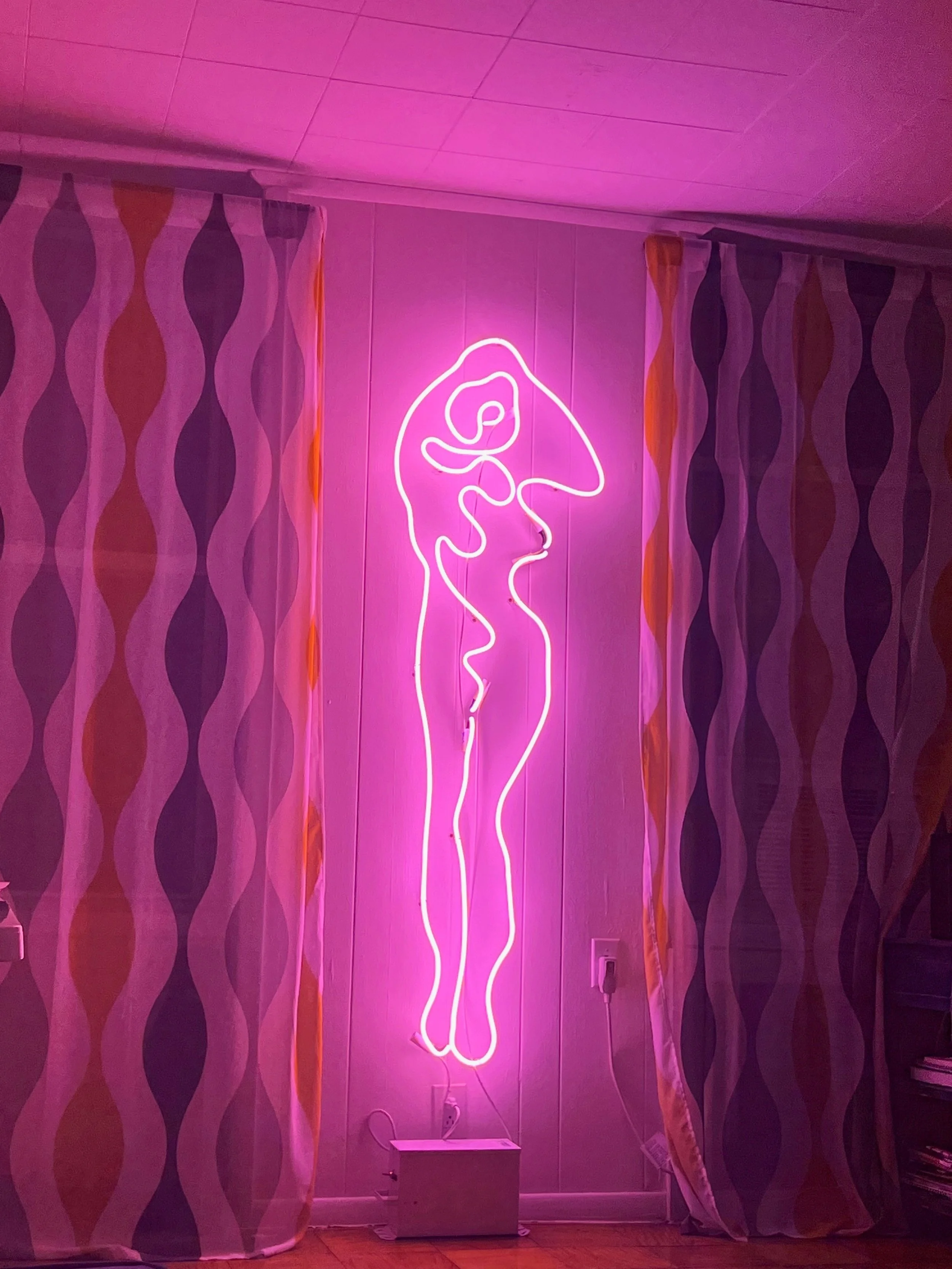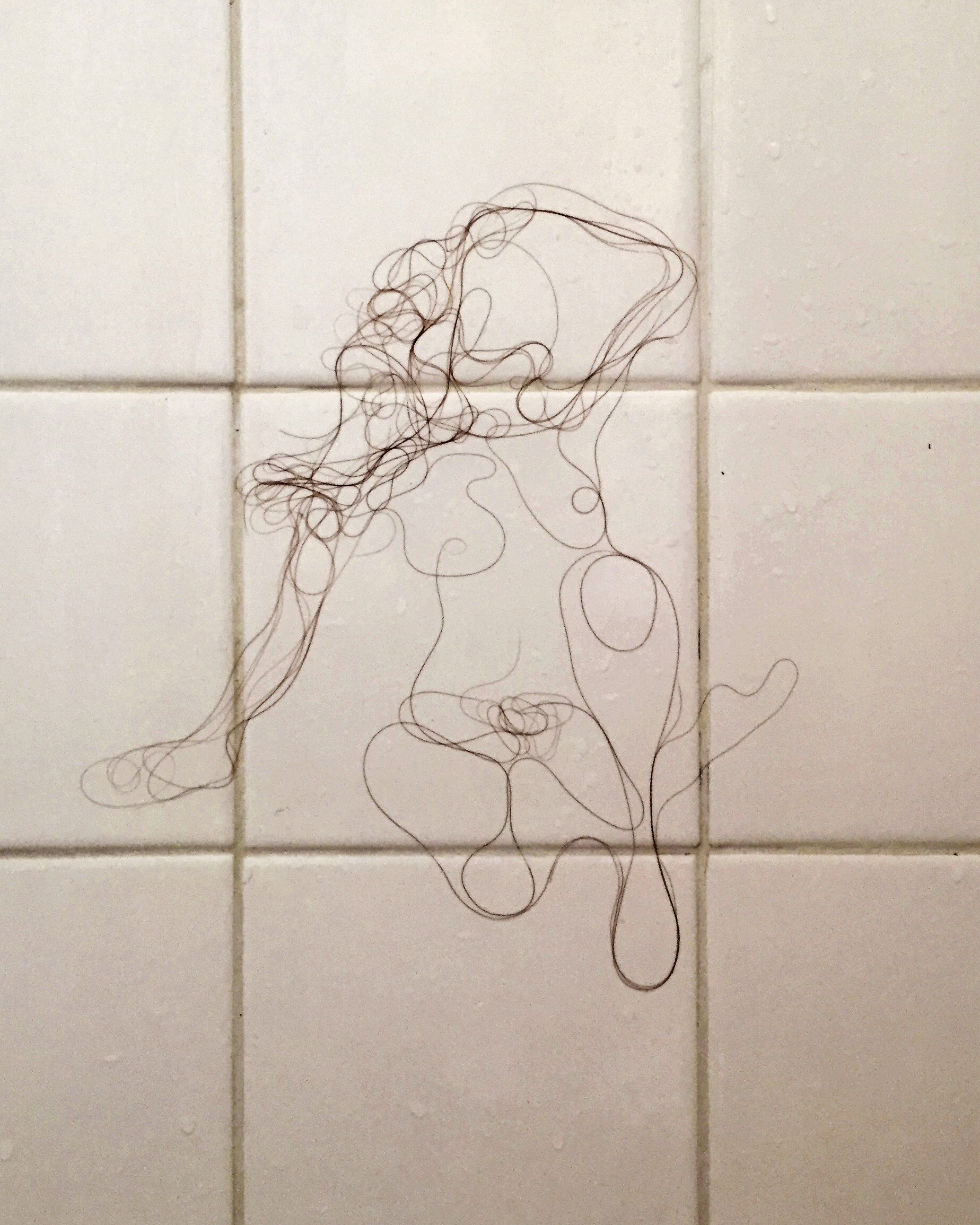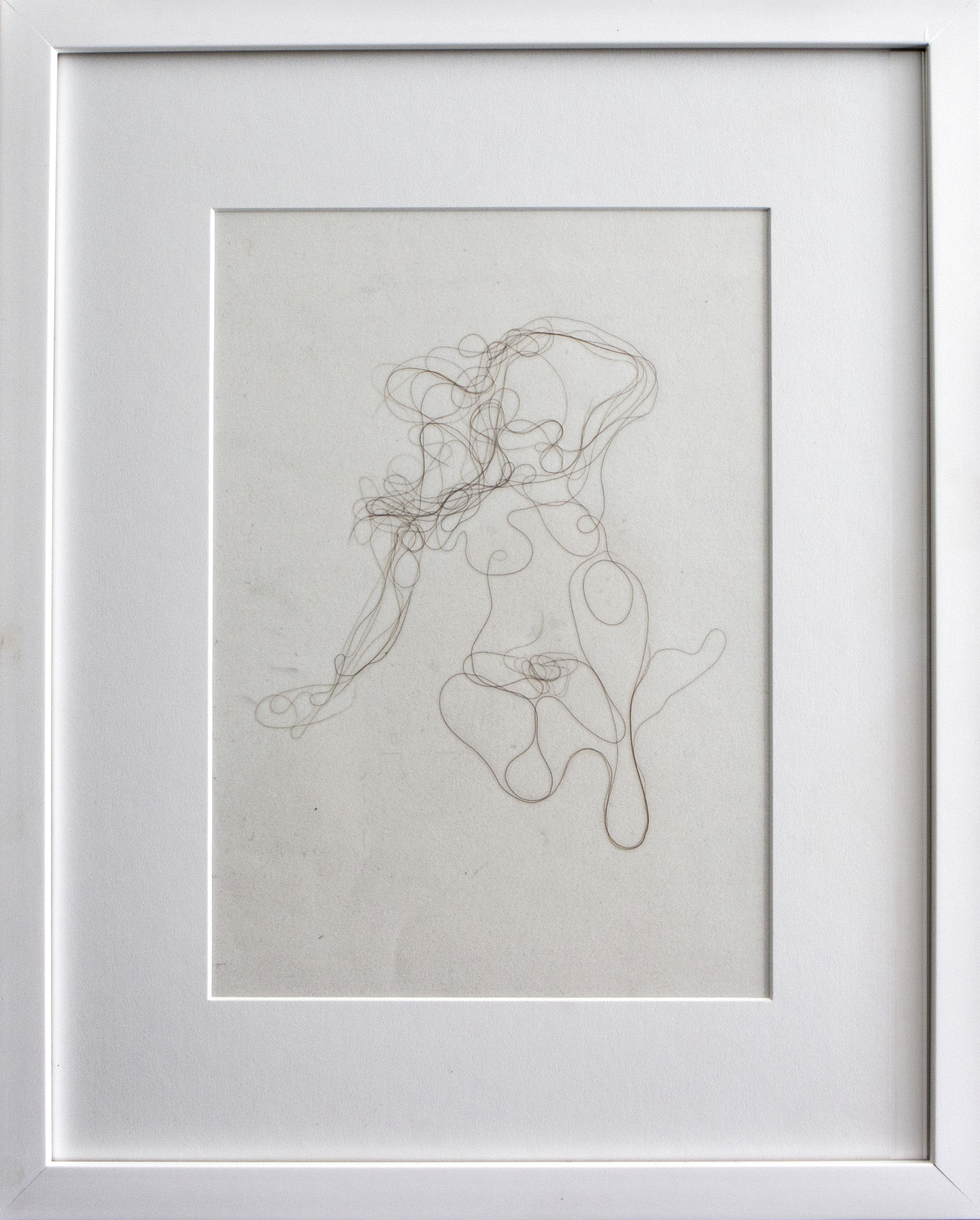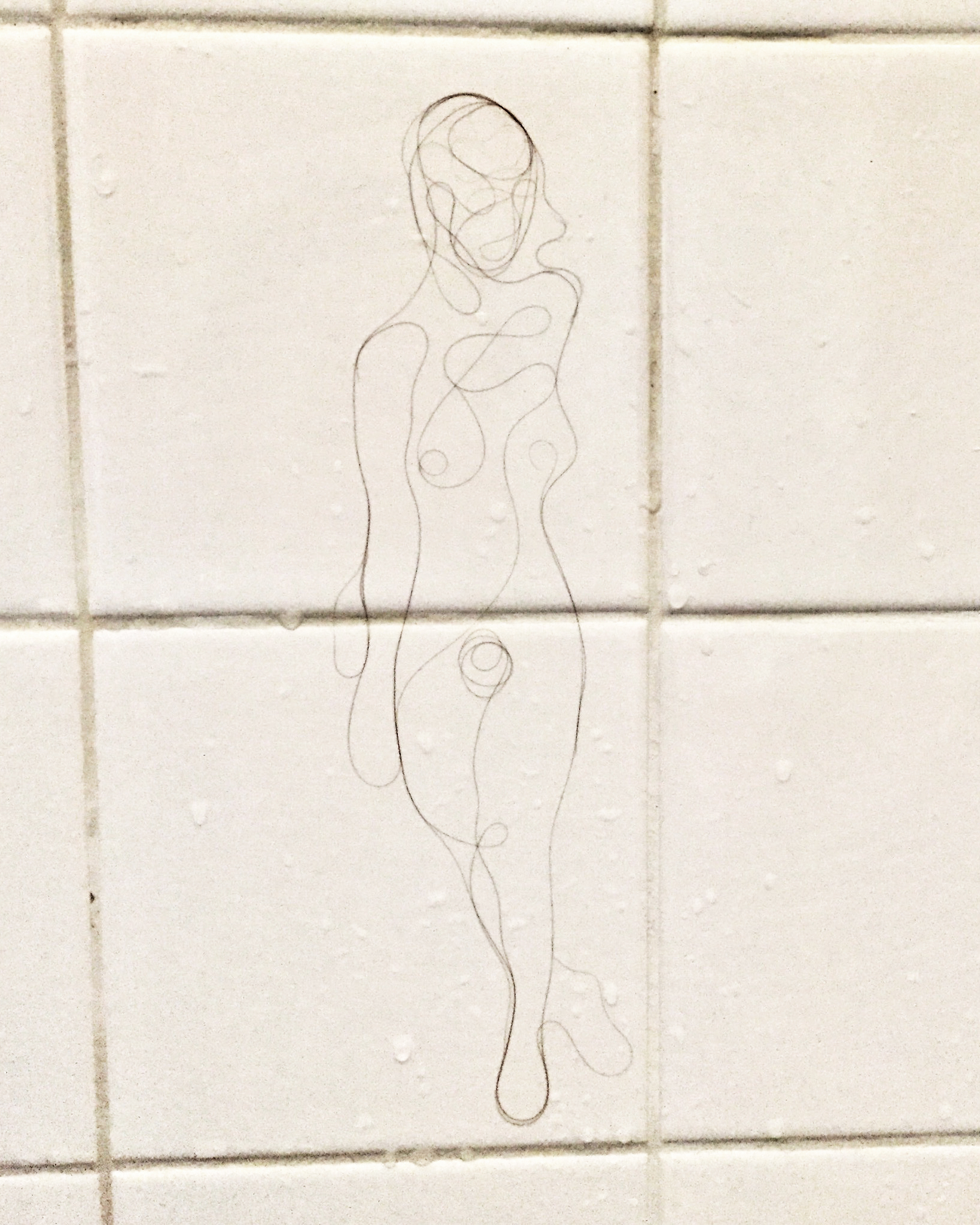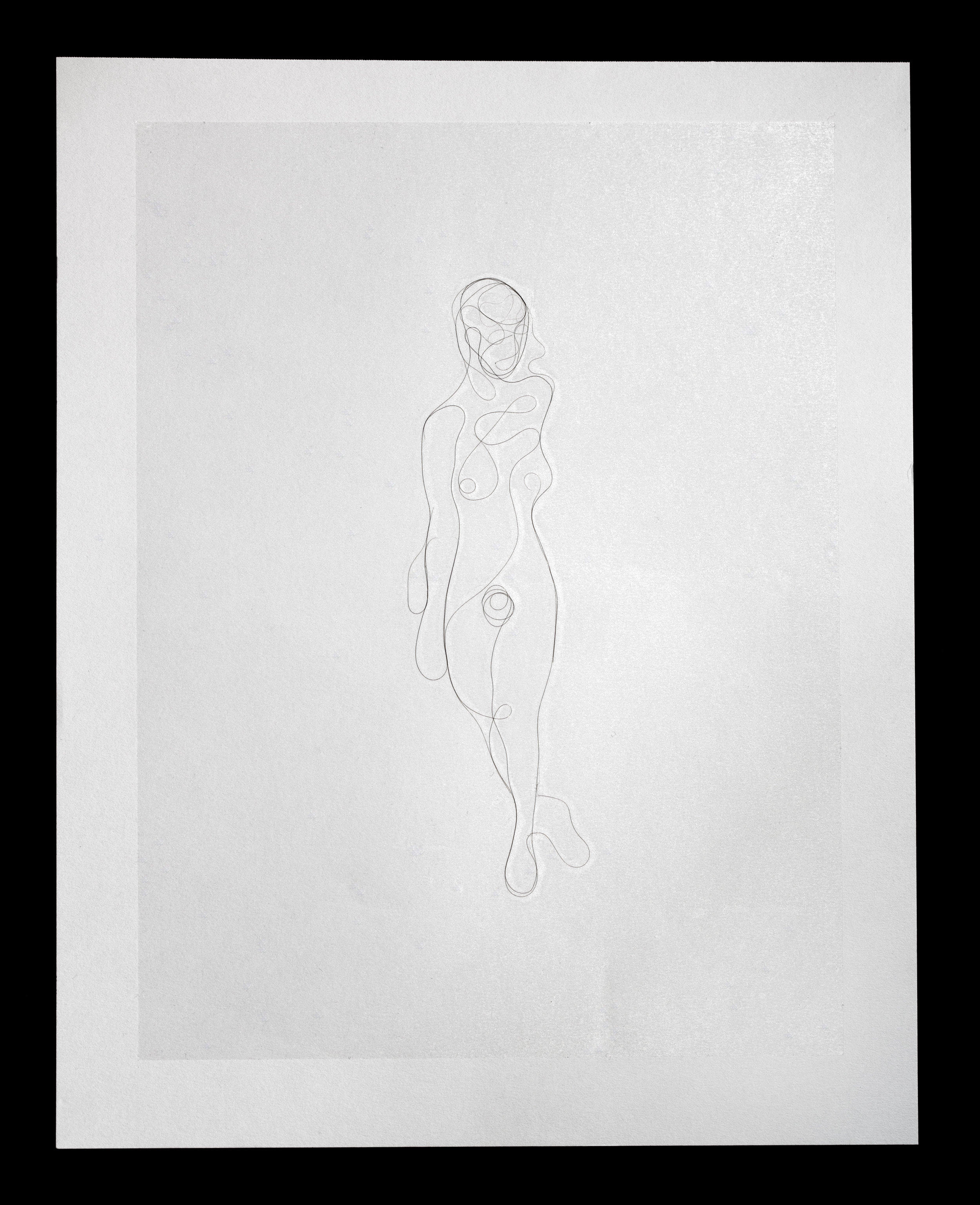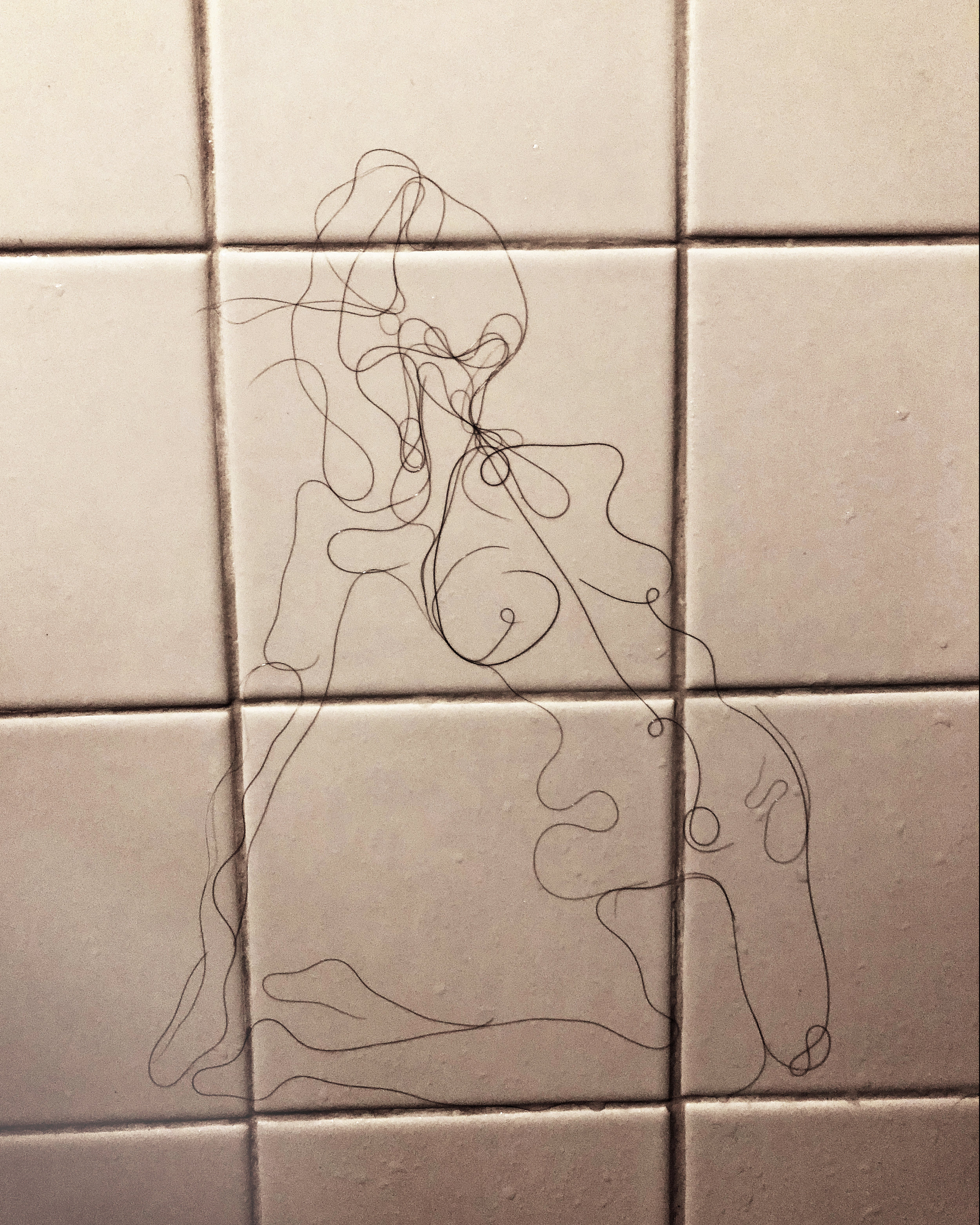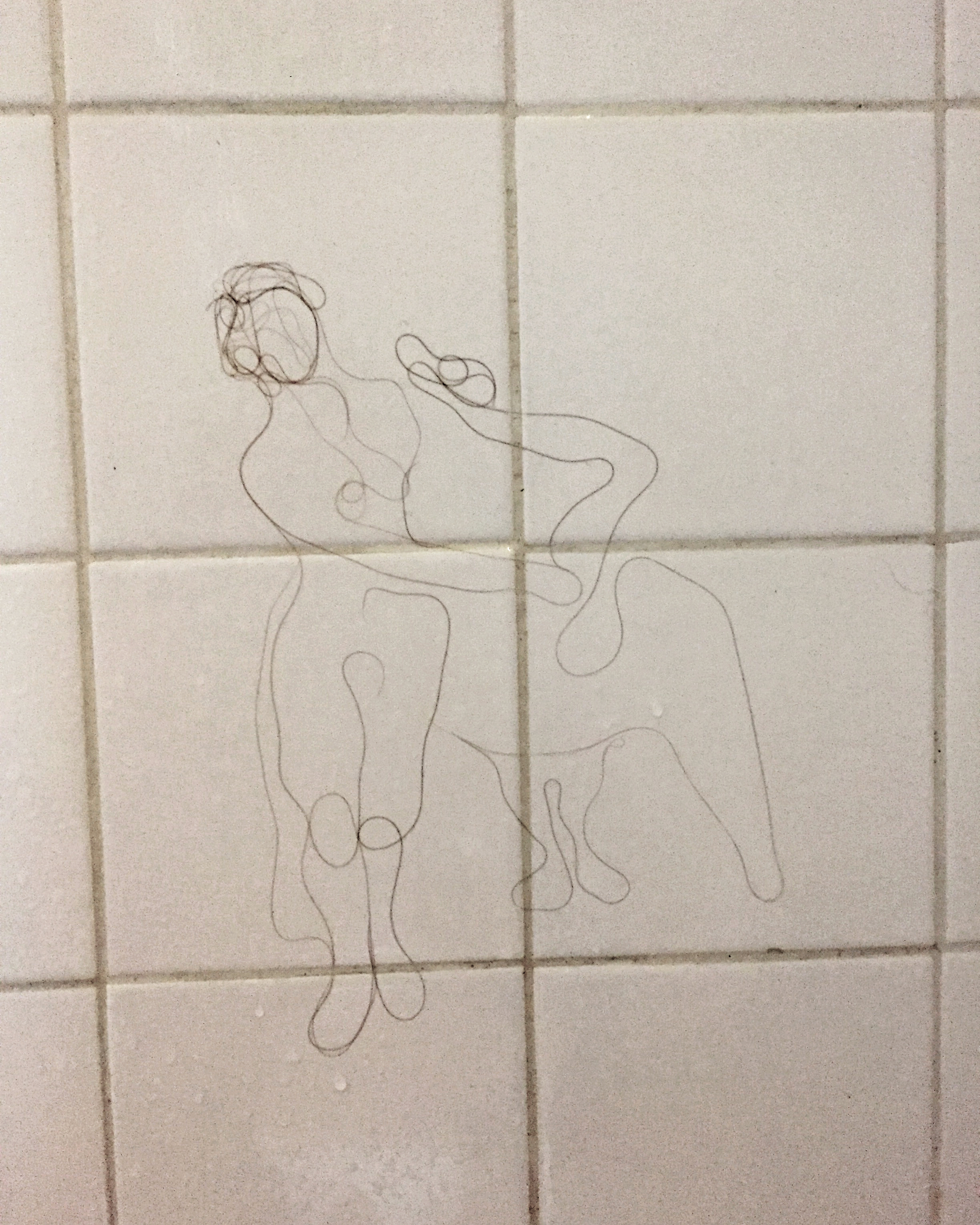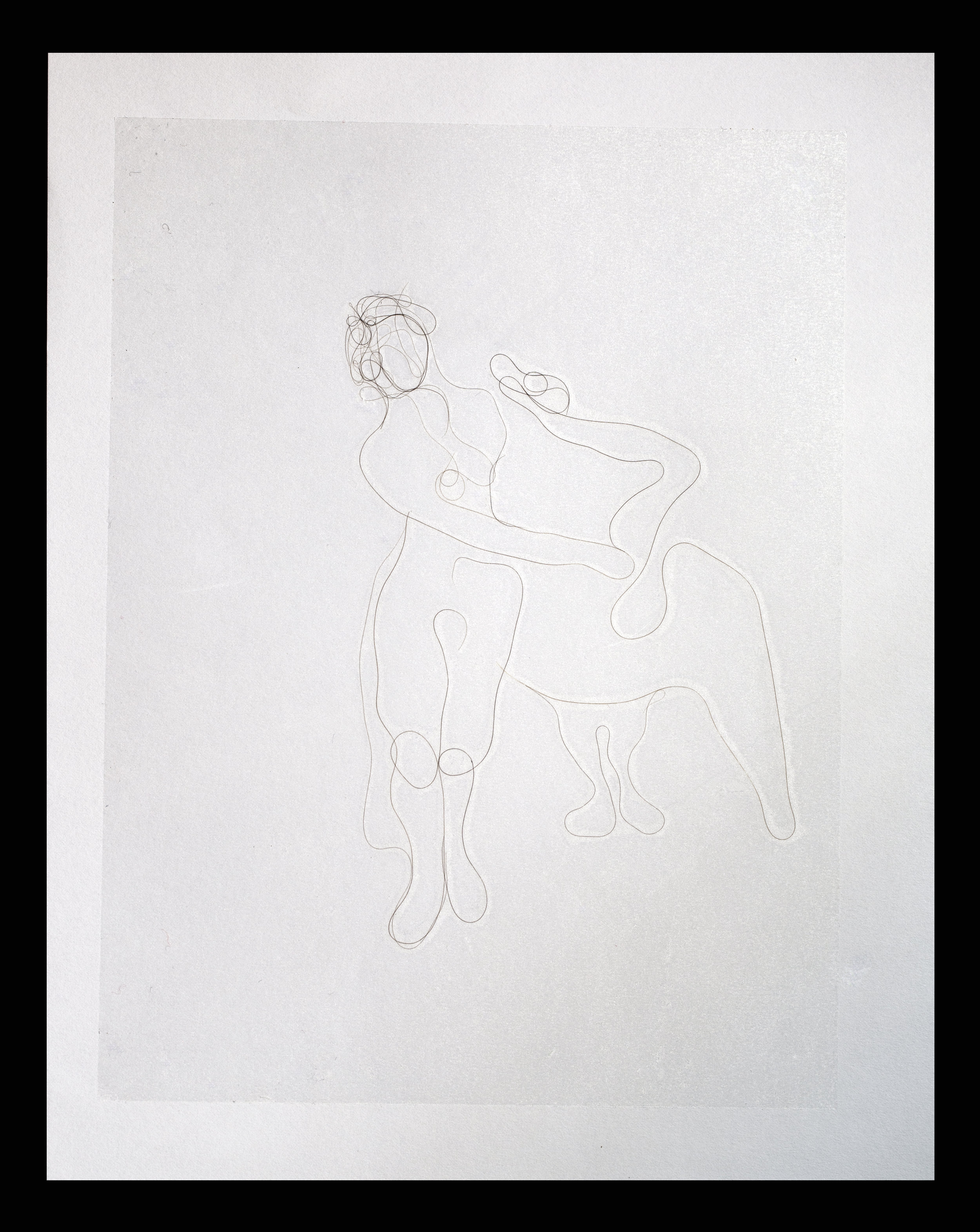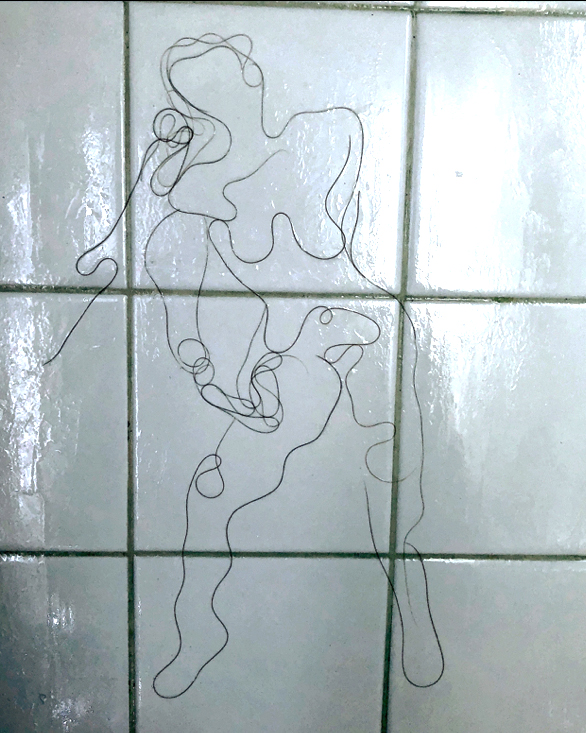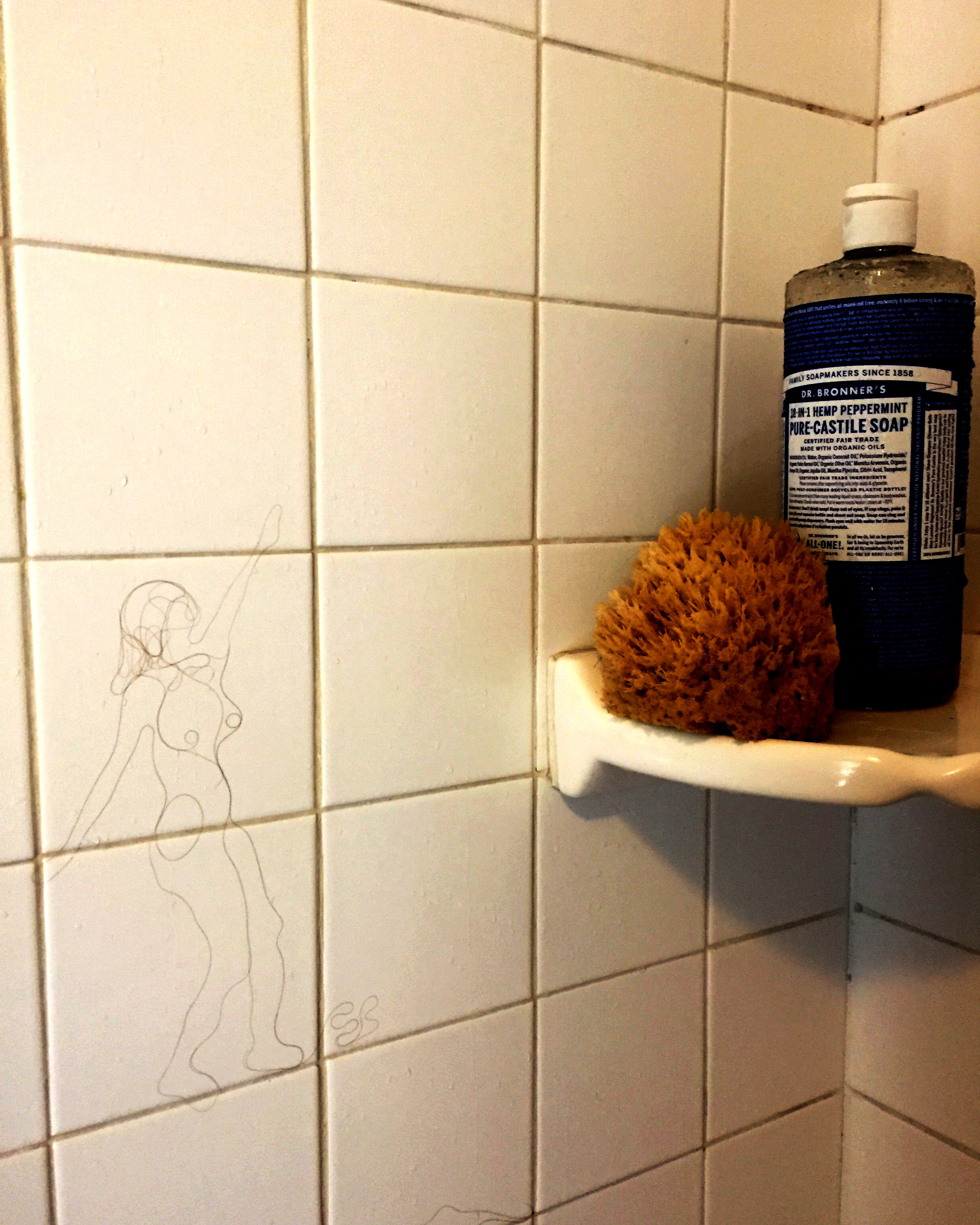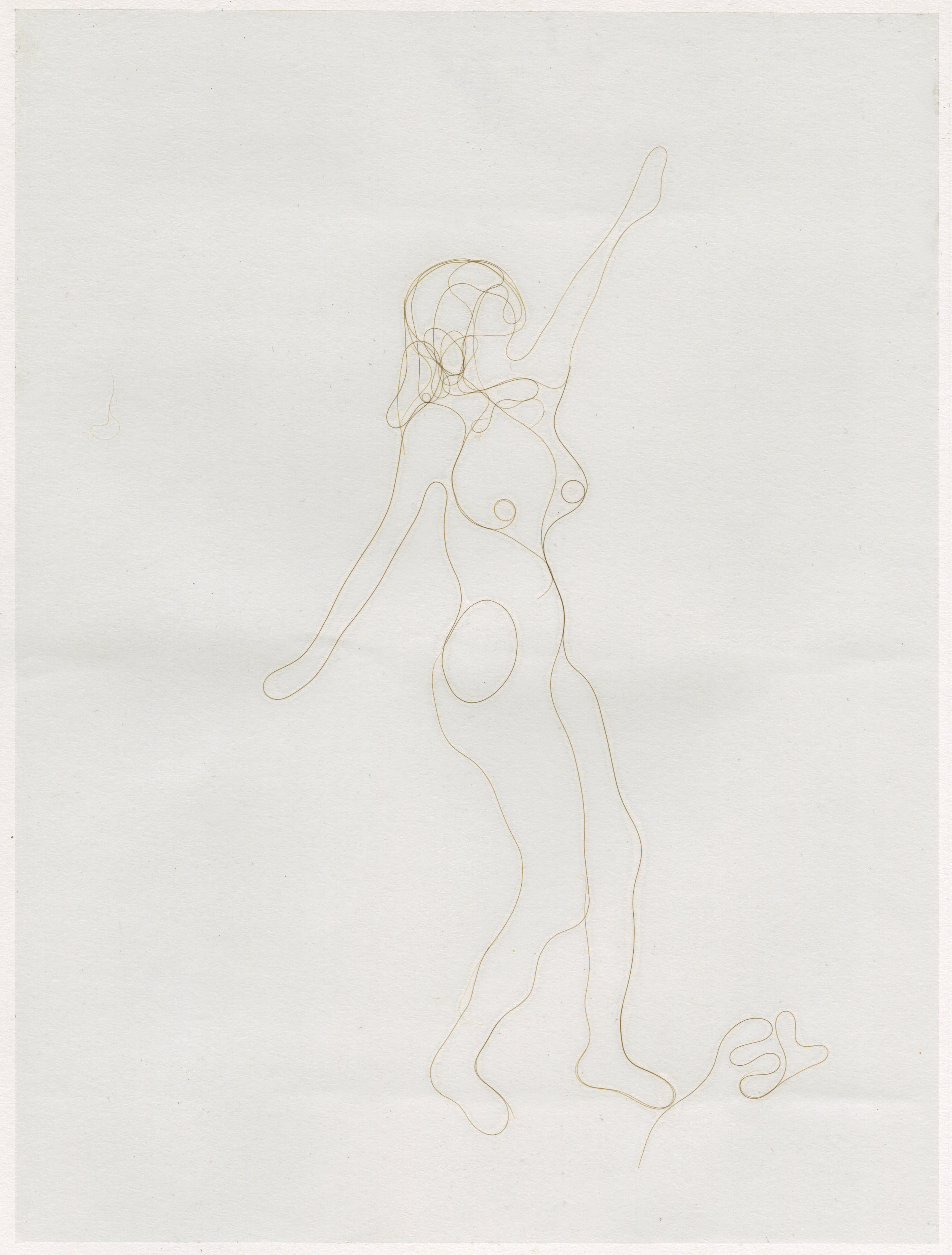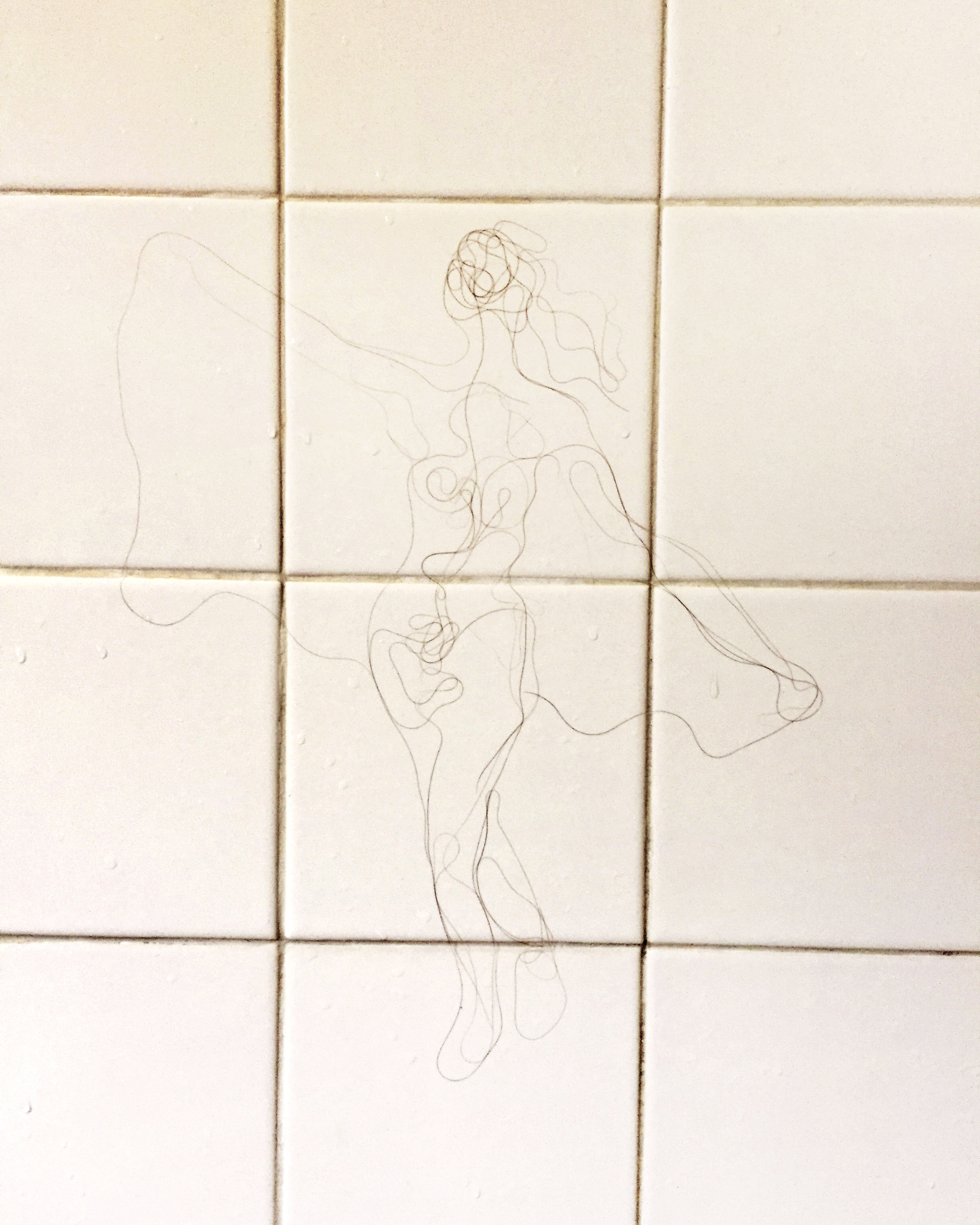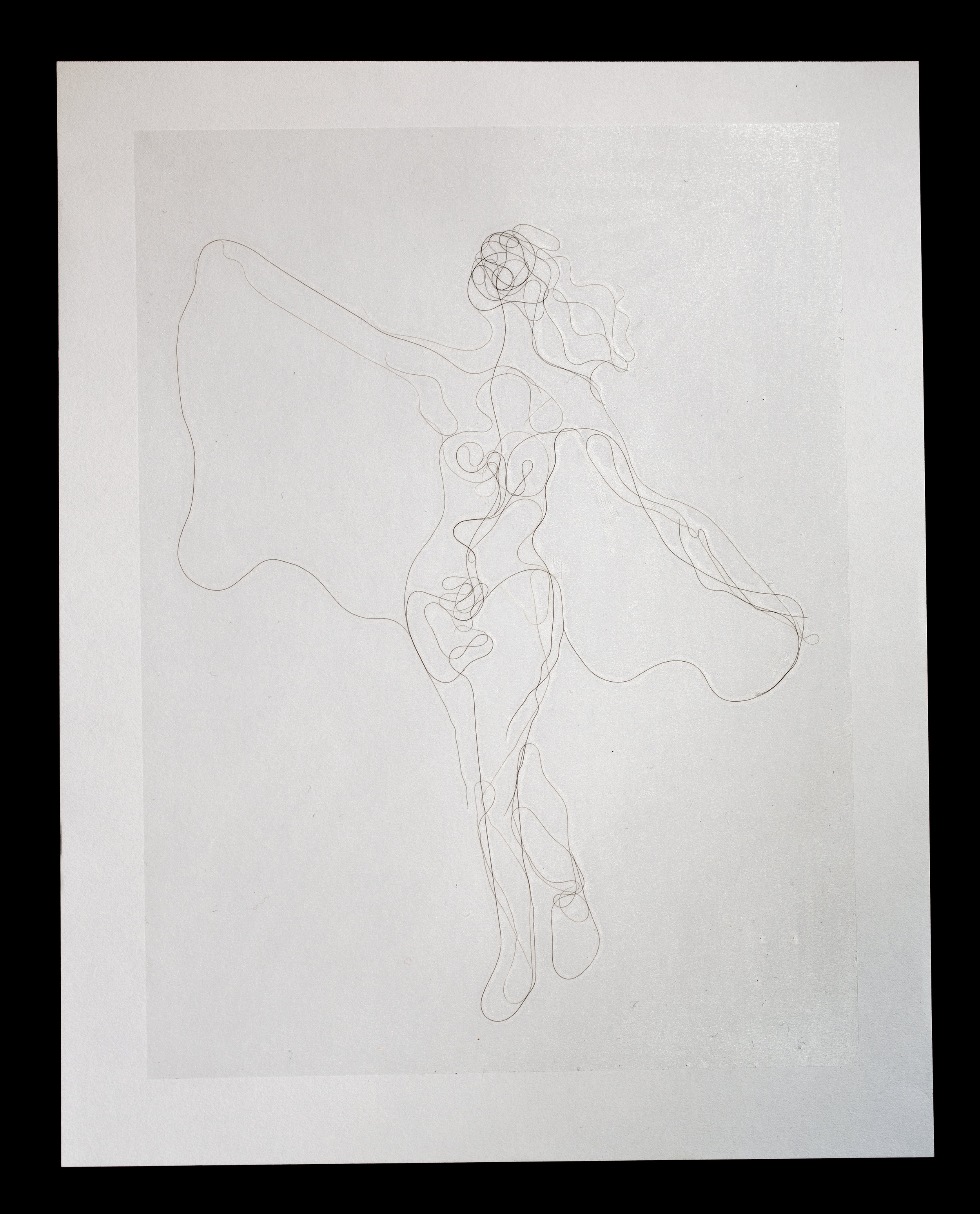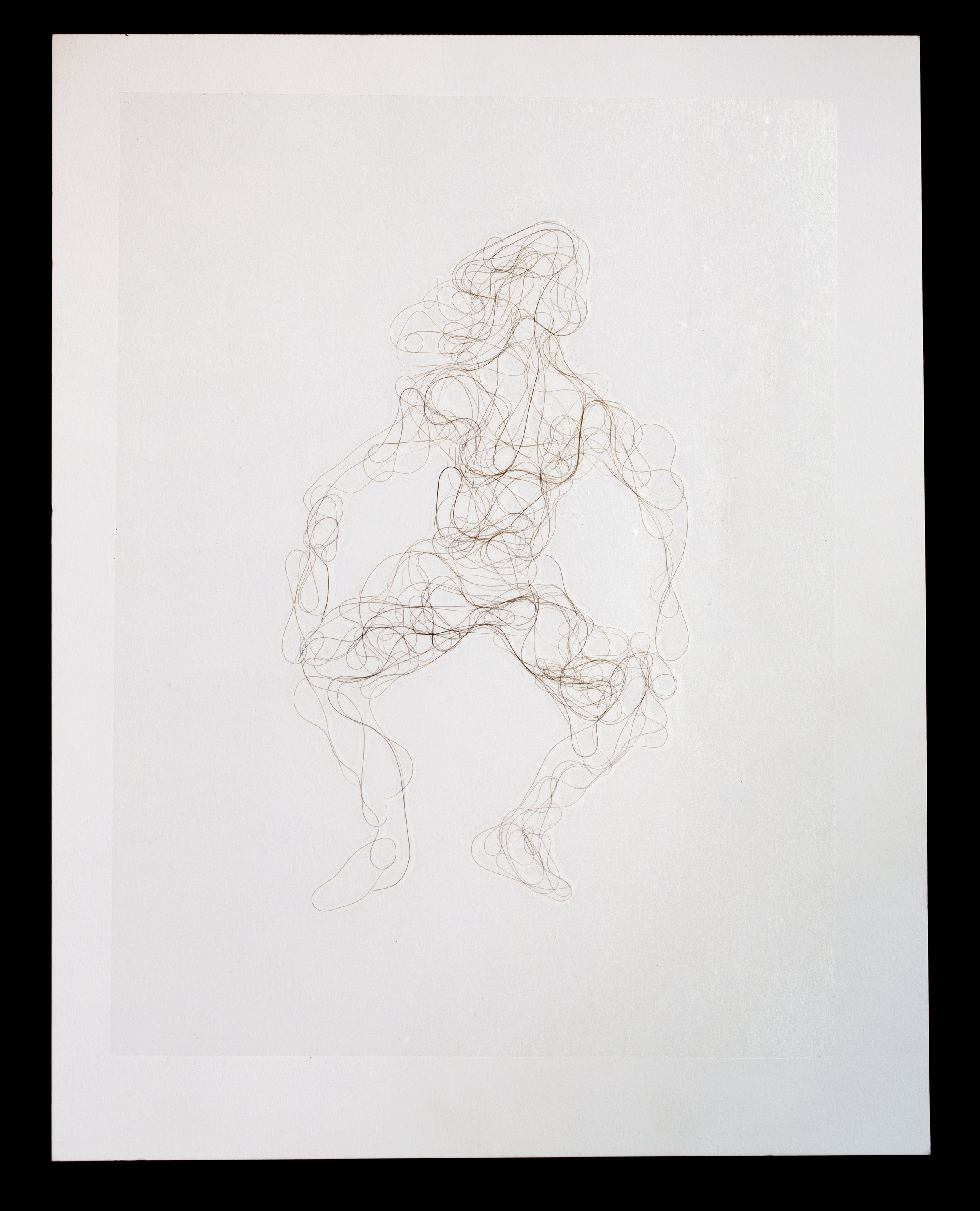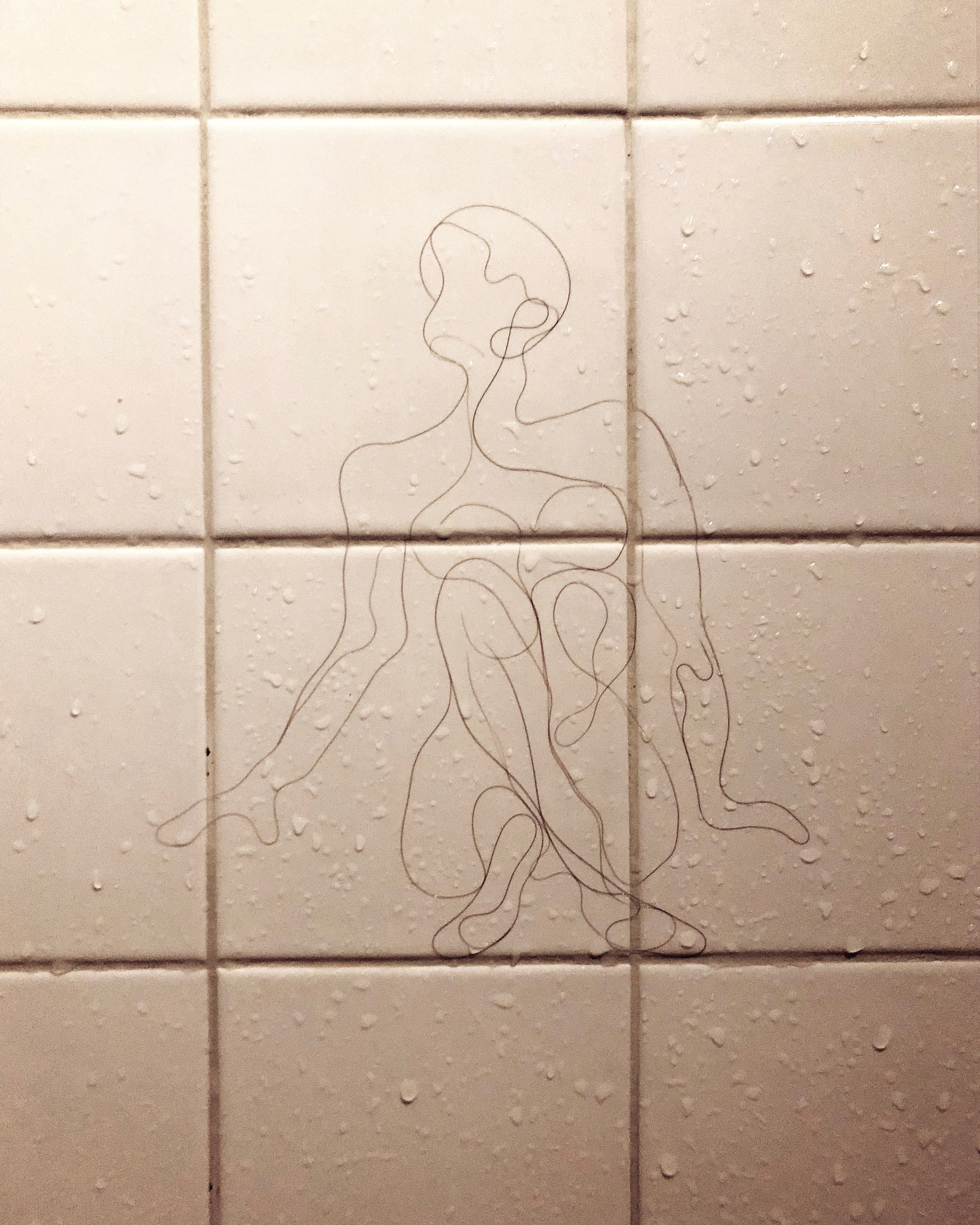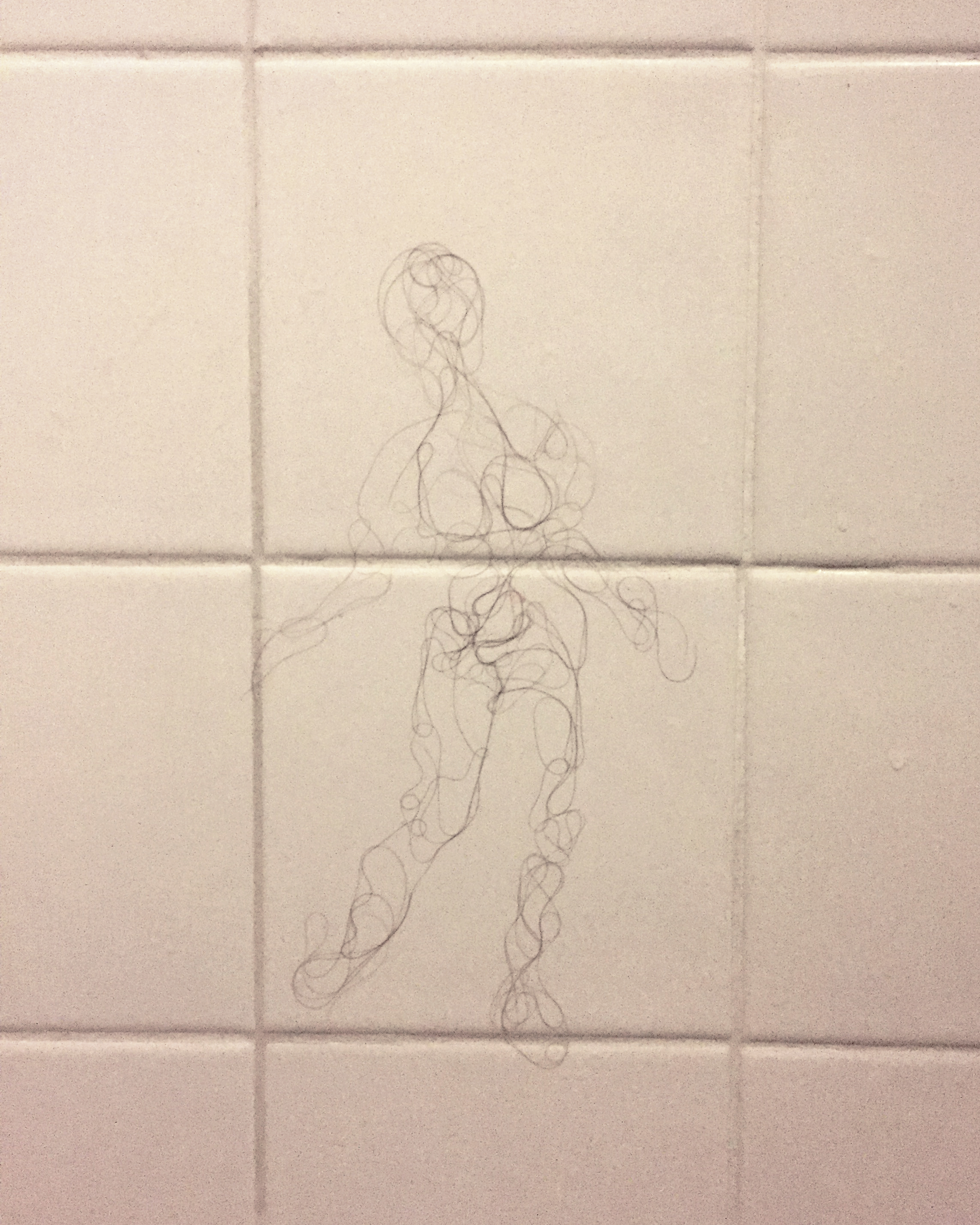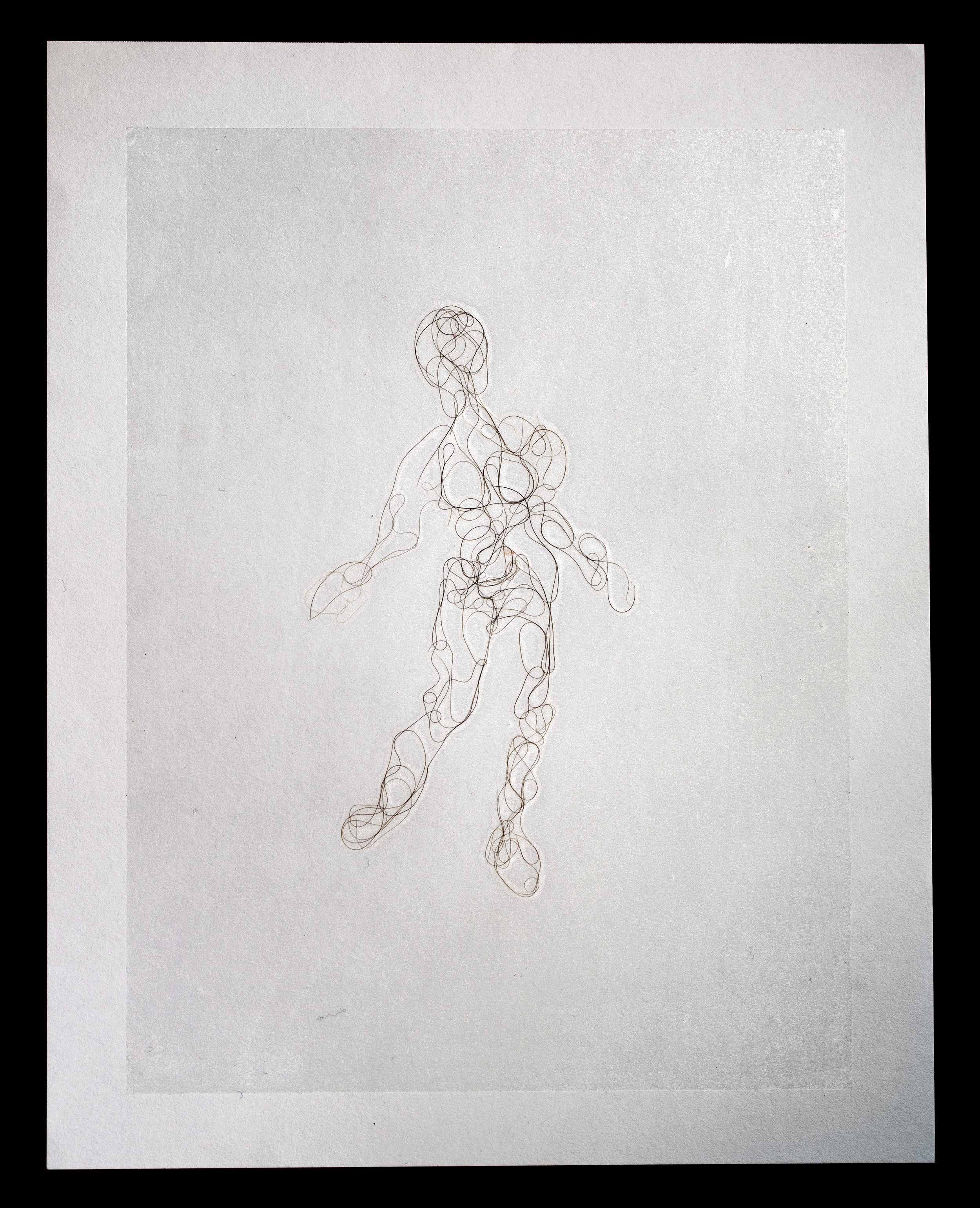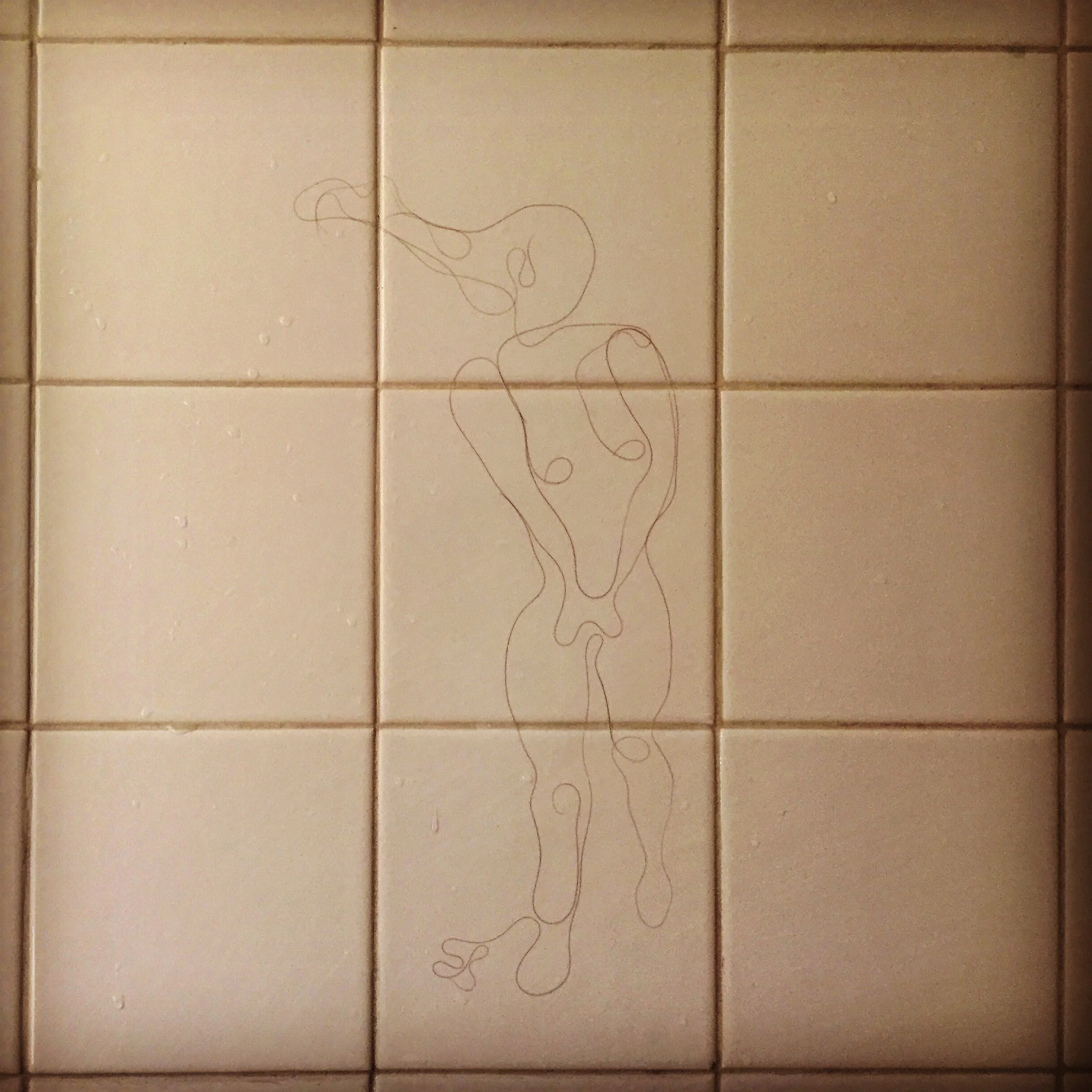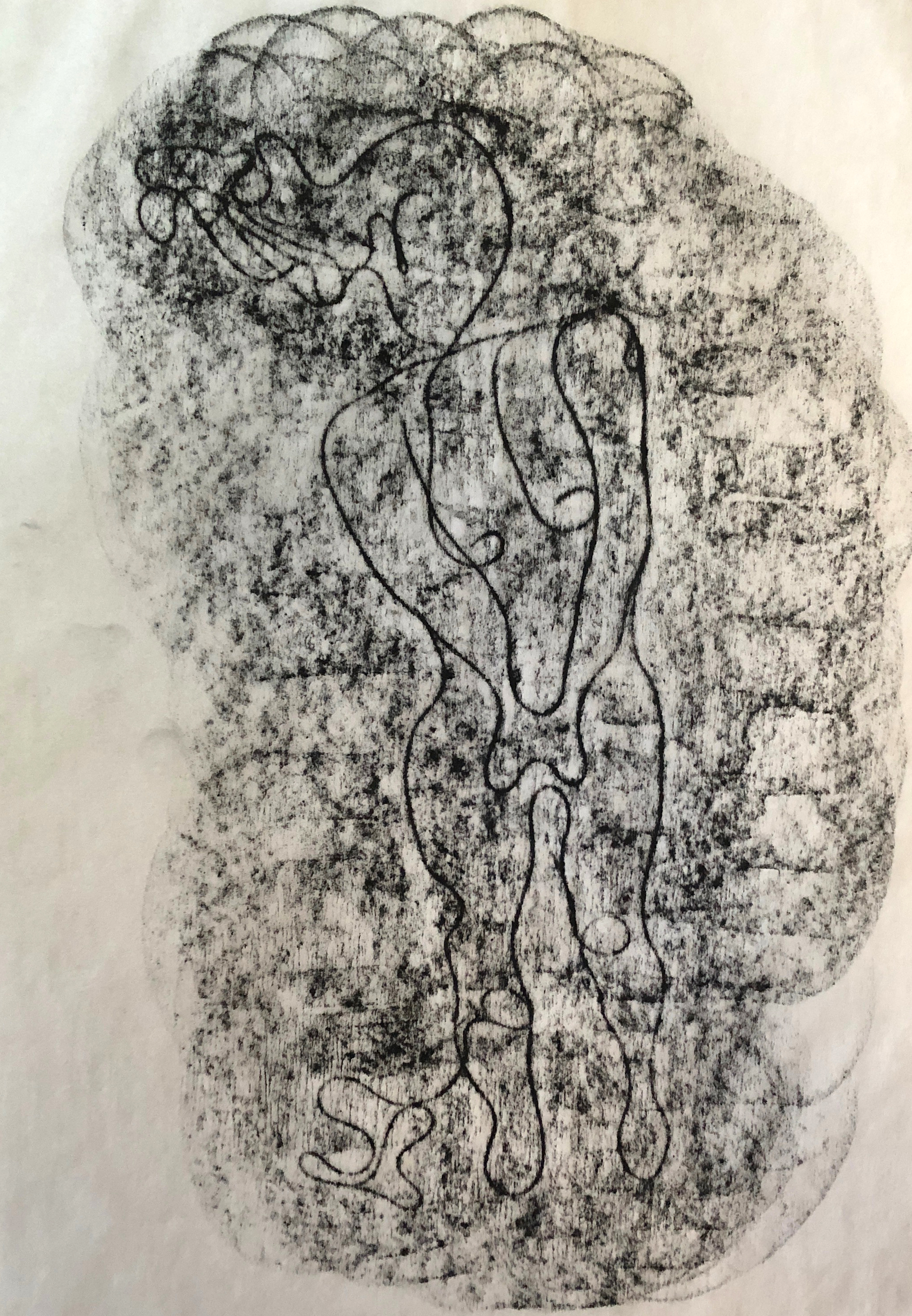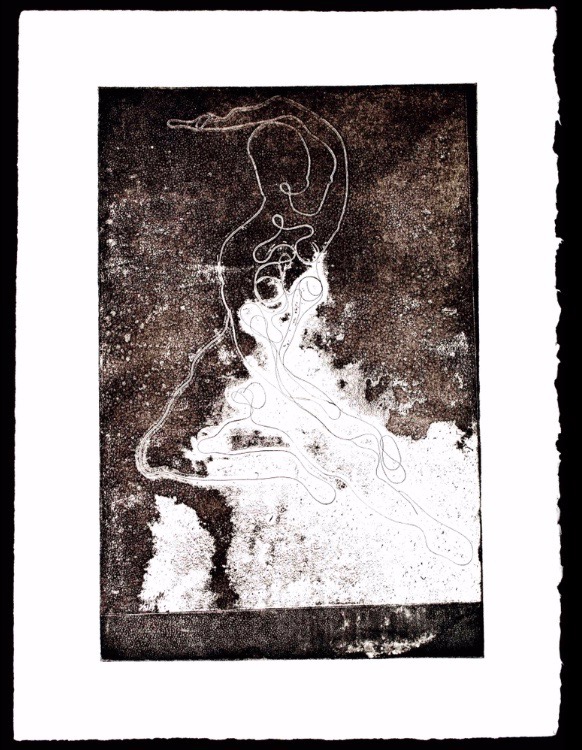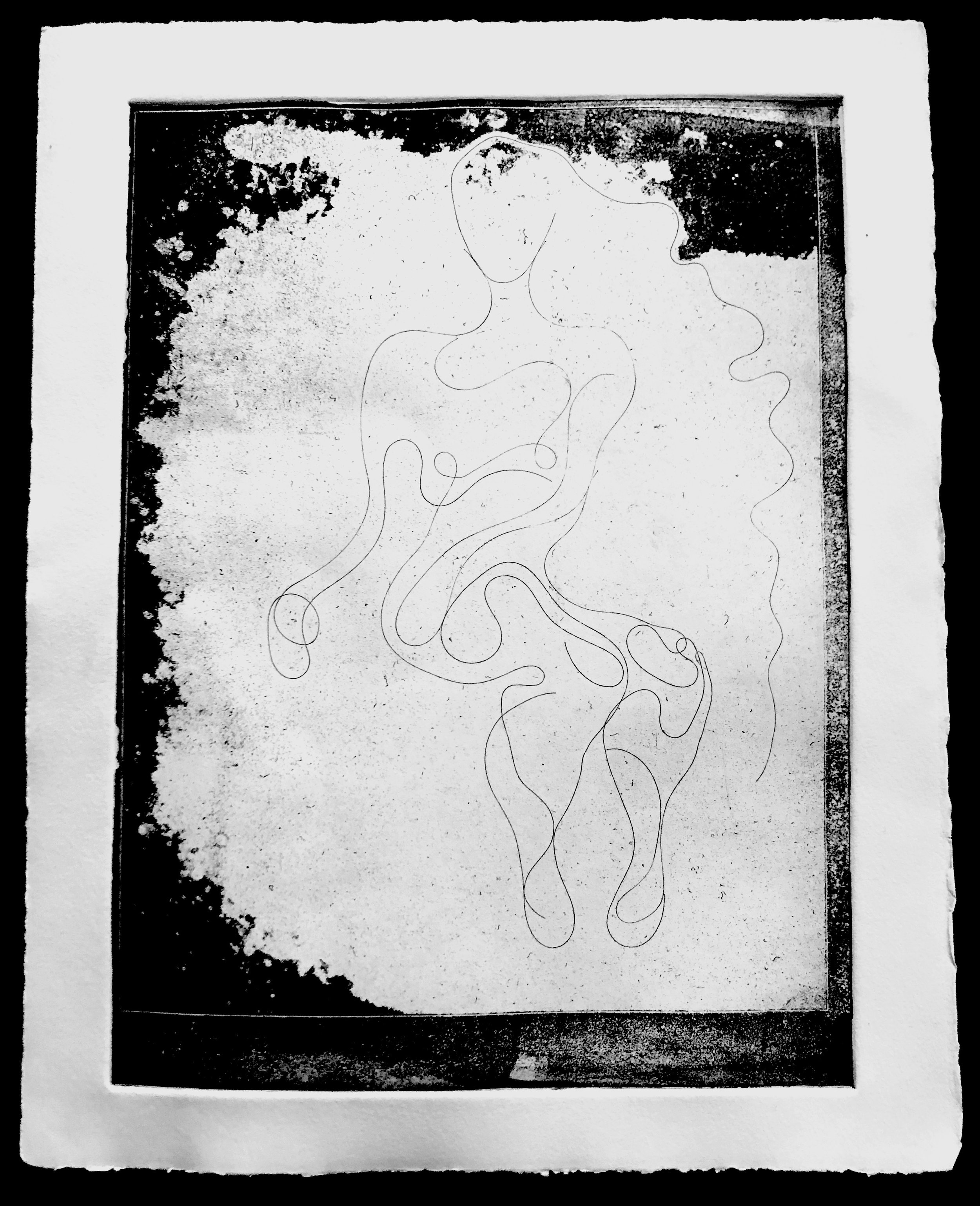MORNING AFTER NUDE, Neon light vector inspired by a drawing of artist’s hair on the shower wall, 7 ft x 2.5 ft, 2023, Artist Proof from limited edition of 4, price available upon request
Hair Drawings and Intaglio Prints
ARTIST STATEMENT
Nude Seeing the Light, Artist's hair on ceramic tile, 2017
In 2005 I walked into a life drawing studio and asked if they were hiring models. I needed the pocket money to support my poetry writing. The studio told me that as a model I would get to draw for free, so I began my arts education on both sides of the easel. This experience led me to publish poems about life drawing and to develop an experimental drawing practice. When modeling I would pick a spot on the floor or the wall where I could fix my gaze and so steady my pose. Soon I was afflicted by pareidolia, the tendency to see patterns where there are none. I began seeing faces and body parts in wood grain and dimples in the plaster. One day, years later, I was taking a shower and fallen strands of hair came loose in my hand. I smeared them across the wall so they wouldn’t go down the drain. I looked and saw the clear image of a woman’s elongated back, a chignon at the nape of her neck. With a few strokes of my finger the rest of her body soon appeared. And so I began using the shower as my studio.
Like the manuscripts of a poet, drawings strike many people as the private, material trace of the artist’s mental and emotional state, as well as a record of their virtuoso hand movements. The shower drawings illuminate what has always been true about the cultural significance of figure drawing, from Pliny to the present: we seek to be voyeurs not only of the depicted nude, but of the artist in the act of creating.
Eve, Artist's hair on paper with adhesive overlay, 11x14, 2017
First I took photographs of the drawings in situ. Eventually I found a way to capture and transfer them using adhesive film. I often say that in our world of reproductions, replicas, and NFTs, these drawings constitute the ultimate autograph since they contain my mitochondrial DNA.
I then had these photographs laser printed on coated ceramic tile. Eventually I found a way to capture and transfer the hair using frisket, the adhesive transparent film that watercolorists use to protect portions of their paintings. These transfer drawings complicate the postmodern cult of the sketch because while the in situ drawings retain the original aura, with the tile background and the water droplets, they also exist only in mechanically reproduced prints. Meanwhile, it is the secondary transfer that contains the original drawing—a line that also constitutes the ultimate autograph since it contains my mitochondrial DNA. Later I progressed to intaglio print-making, using my hair to etch line drawings into zinc plates. During the soft-ground impression phase, water and dust create irregular patterns—chance interventions that I etch into the plate as serendipitous backgrounds. For me this is a spiritual practice that renders the invisible world partly visible. These prints remind us that just as our body’s leave a trace on the world, the world also leaves its trace on us.
I knew, however, that paper was not the ultimate destination of these drawings. When these women appear to me they feel so luminous and larger than life—I knew I had to stare woking with light. I made my first 7ft neon with the help of a fabricator, and when I moved back to LA I took a neon fabrication workshop with Lili Lakich in the Arts District. These buzzing neon nudes recreate for the viewer the electric energy I feel when channeling and embodying each of these luminous forms.
I have also created close-up videos of my hands and wrists as I make the drawings. The soothing sounds of falling water and my singing of lullabies remind the viewer that creation is born in meditative play. When we bring our full attention to ordinary moments, we free ourselves to perceive unexpected beauty in familiar situations and materials. A strand of freshly fallen hair reminds us of the line between life and death. Spun into the image of a sensual nude, it suggests that our sensuality comes from our mortality. We are most alive—most human and most divine—when we remember that our bodily forms are temporary.
In this, these drawings share profound overlaps with my olfactory artwork. Through public workshops in human body odor, multi-media installations, and an artisanal perfume line, I explore psychological reactions to the body’s aromatic signature. By framing and encouraging reflections on the body’s traces, my work seeks to interrupt the pathways of our most subconscious judgments and to foster more mindful encounters with others and the world around us.

